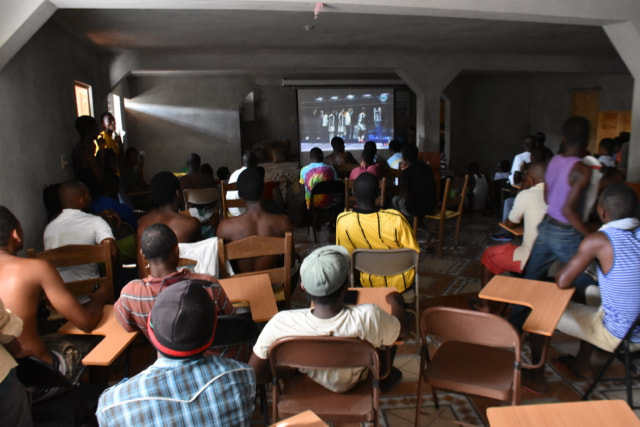"Haiti is extremely vulnerable to natural hazards with more than 90 percent of the population at risk. On October 4, 2016, Hurricane Matthew, the most devastating disaster since the 2010 earthquake, battered Haiti’s southern peninsula, causing damage equivalent to 32% of GDP. One third of hospitals in that region were affected, more than 500 schools were destroyed, and the losses in agriculture, fishing, and livestock had
a long-term impact on the livelihood of the affected communities." --The World Bank
INFRASTRUCTURE
Just as clean water is key to good health, infrastructure is the foundation of development. Access to basic needs stimulates countless possibility. Rural Haiti is still struggling for fundamental "gifts" that the developed world takes for granted. FBR makes resources available to modify some of their need.
Roads
Lack of maintenance of the unpaved roads surrounding B-R make travel in the area increasingly difficult and ultimately threatens to isolate the community. With FBR support, community leaders have purchased materials and organized volunteer work parties to reverse the affects
of erosion keeping these critical connections passable. |
ElectricitySolar power at the community center offers the B-R community its first and only consistent source of electricity. Just having light in a large space offers this community a significant extension to the day. It facilitates computer classes, meetings, trainings, and entertainment such as television and the Sunday evening movie.
|
LightThe Nokero (no-kero) solar light bulb is designed to replace kerosene lamps which are still prevalent in Haiti. It provides enough light to read by and can be charged from the sun every day. The opportunity to read at night increases a student's ability to learn. The lights are an affordable alternative for a population which does not have access to electricity.
|
Public SpaceThe community center is a two-story, 3,400 sq. ft. structure includes an auditorium, kitchen, library, classrooms, meeting rooms, guest quarters, and a walk-out roof.
It is a place for gathering, celebration, learning and entertainment. The building has become an essential "home base" for practically every local initiative. |
Before
|
After
|
Miracles Happen
To enter B-R one had to cross a river then
climb a steep hill over a road which challenged pedestrians and defied any motor vehicle without 4WD. After years of encouragement, the government, which has never had the resource to improve roads in the countryside, undertook a two-year project to level and pave the road. Having this road as in addition to the soon-to-be-completed pedestrian bridge, bring B-R much closer to the "rest of the world." |










